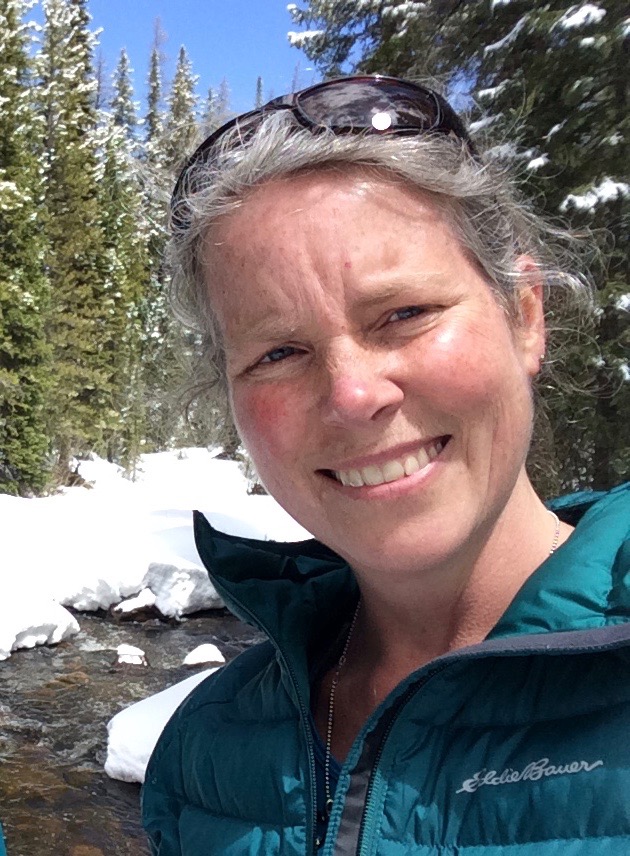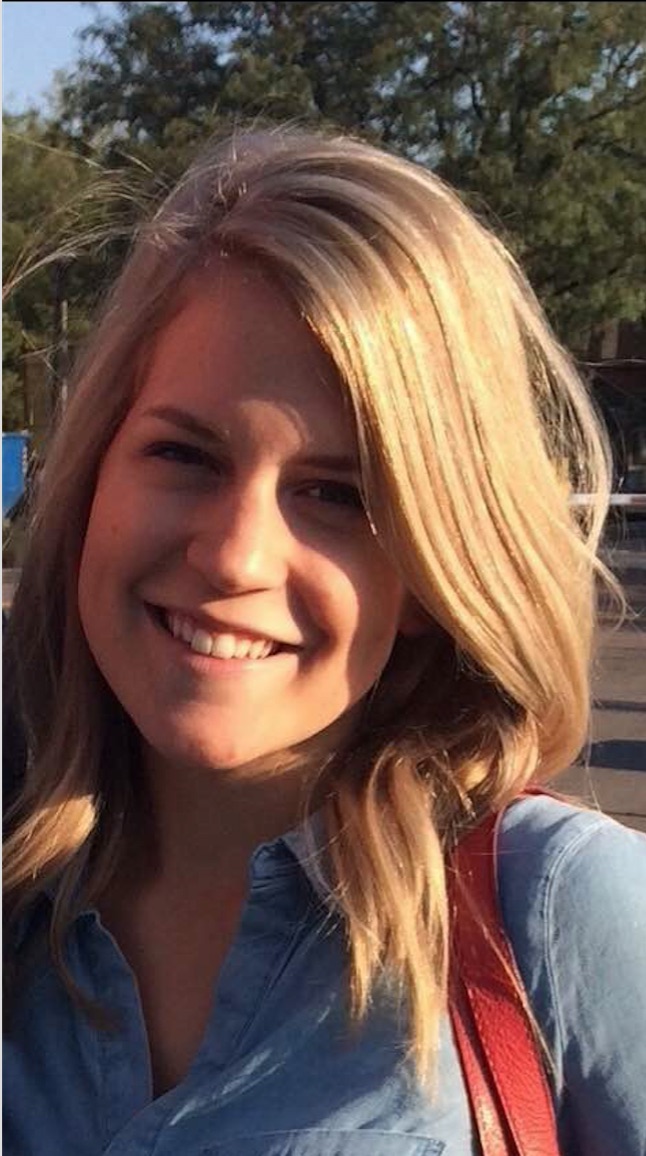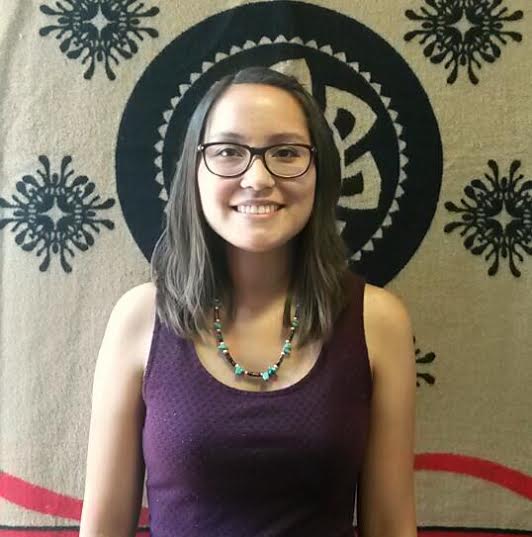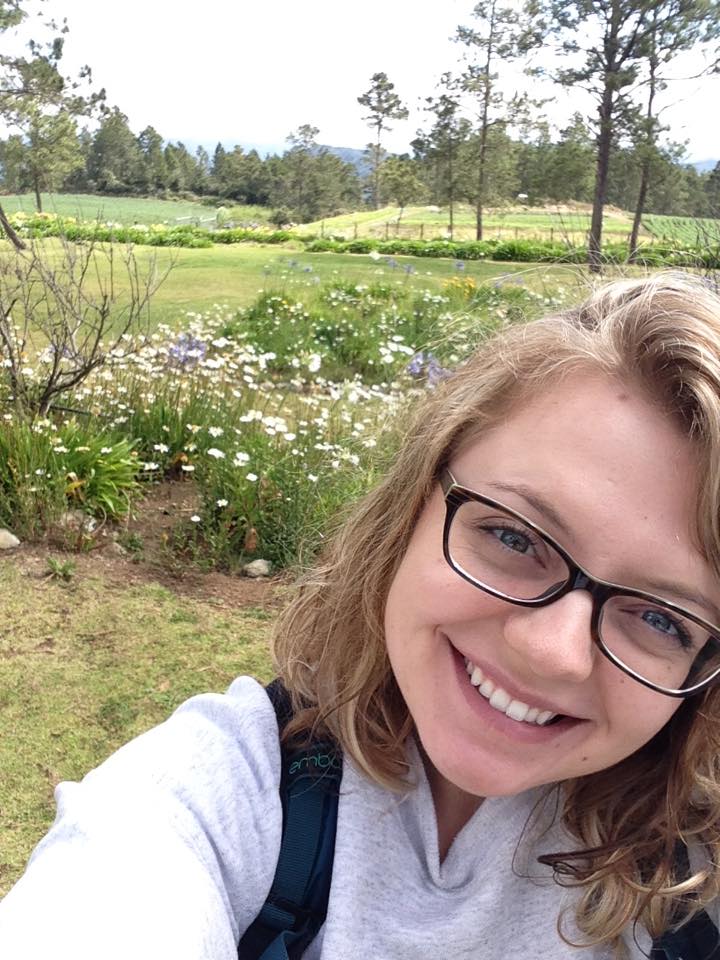
East Africa IRES #1: Getting ready for field work!
EA-IRES #1
Welcome to the first post of the East African International Research Experience for Students (EA-IRES) 2015-16 fellows group! We are a group of CSU undergraduates and their faculty lead who are traveling in Samburu County, Kenya from June 6 – July 10th 2016.
EA-IRES is a competitive program for CSU sophomores and juniors that will build research skills, collaborative work ability and interdisciplinary experience in the context of social-ecological dryland systems. The program consists of coursework, the preparation of a research proposal, the implementation of the proposal during a field experience in East Africa, and the analysis and presentation of data. Each year, five students will be chosen from a competitive field to participate in this program.
On Monday, June 6th, 2016, the first cohort of EA-IRES fellows will be leaving Colorado to travel to Kenya for five weeks of field research. Our program will begin in Nairobi, where we will visit Nairobi National Park and the David Sheldrick Elephant Orphanage to meet with fellow students and colleagues at University of Nairobi, among other activities.
We will then head north up the stunning Rift Valley, through the Aberdare Mountains and past Mount Kenya, to our field base at Heshima Camp, located just minutes from the town of Archer’s Post in southern Samburu County. Heshima Camp has rustic accommodations of small stone houses with beds and mosquito nets. Fortunately, we will have flush toilets and running water, as well as solar and generator electricity that will allow us to charge our devices at the end of the day. In Samburu we will be working with community members in a number of villages to study household water, people and wildlife, women’s health, medicinal and forage plants for livestock, and pastoralism and land use change. We will be together for the entire five weeks of the trip, and will be working with people in the same settlements at the same time. The finale of our time in Samburu will be a visit to Action for Cheetahs’ field camp at Meibai Conservancy in western Samburu, around four hours from our camp, before heading back to Nairobi.
As we get ready to leave for Kenya, we have been busy working on the student’s research tools, two of which are focus group guides, and three of which are semi-structured interview forms. This is a very important part of research, to be as prepared as possible before we depart! All of the students have had training in human subjects for the protection of research participants, have applied for Kenyan research permits, and have received their requisite vaccinations and anti-malarials. We have met with Study Abroad, and with the travel nurse at CSU’s Hartshorn Clinic. We have shared information on gear sales for those who needed sleeping bags, backpacks and other supplies. This is such an exciting experience!
You can see more about the 2015-16 fellows and their research projects below. We will return to CSU on July 10th, 2016.
For more information on CSU’s EA-IRES program and our affiliated faculty and partners, or to find an application for the 2016-17 program (due July 1, 2016!!), please visit our website at http://www.nrel.colostate.edu/projects/ires-home.html, and please continue to follow our blogs through the summer of 2016!
**Program Lead**
Dr. Stacy Lynn – Research Scientist, Natural Resource Ecology Laboratory
 Welcome to the EA-IRES blog! I am an ecologist, or a social-ecologist, at Colorado State University’s Natural Resource Ecology Laboratory. I’ve been here at CSU since 1997, when I moved to Fort Collins to pursue my Master’s degree in Rangeland Ecosystem Science, and then stayed to pursue my PhD in Ecology. Over the course of my two graduate degrees, I spent more than two years in the field in Tanzania, living and working in rural Maasai pastoral (livestock-herding) communities looking at questions related to people, livelihoods, wildlife, conservation and land use in pastoral drylands. I am fascinated with East African pastoral systems – both the ecology and the people – and I look forward to leading this group on a truly experiential learning experience in Samburu County, Kenya! I have been working in Kenya and with partners at University of Nairobi since 2011.
Welcome to the EA-IRES blog! I am an ecologist, or a social-ecologist, at Colorado State University’s Natural Resource Ecology Laboratory. I’ve been here at CSU since 1997, when I moved to Fort Collins to pursue my Master’s degree in Rangeland Ecosystem Science, and then stayed to pursue my PhD in Ecology. Over the course of my two graduate degrees, I spent more than two years in the field in Tanzania, living and working in rural Maasai pastoral (livestock-herding) communities looking at questions related to people, livelihoods, wildlife, conservation and land use in pastoral drylands. I am fascinated with East African pastoral systems – both the ecology and the people – and I look forward to leading this group on a truly experiential learning experience in Samburu County, Kenya! I have been working in Kenya and with partners at University of Nairobi since 2011.
For a bit more background, my undergraduate degree is in Education from Penn State University. I taught three years of elementary school in the Baltimore City Public School District before joining Peace Corps and traveling to the country of Namibia in southern Africa for two years 1994-96 as a teacher trainer. I also worked closely with Cheetah Conservation Fund, and it is that work with farmers and wildlife that redirected me to study natural resources at CSU.
In addition to my primary affiliation with the NREL here at CSU where my areas of interest focus on East African social-ecological systems and citizen science, I am also a faculty affiliate of the Department of Ecosystem Science and Sustainability (ESS), advising faculty of the Graduate Degree Program in Ecology (GDPE), a faculty lead of The Africa Center, faculty affiliate of the Center for Disaster and Risk Analysis (CDRA), Sustainability Fellow with the School of Global Environmental Sustainability (SoGES), and a member of the water faculty of the Colorado Water Institute.
**2015-16 EA-IRES Fellows and Projects**
Holly Cox – Junior, Ecosystem Science and Sustainability
 Holly is a junior majoring in Ecosystem Science and Sustainability. Her focuses include water availability in developing regions, pastoral land use patterns and social ecological systems. Her interests are water management, dryland ecology and riparian systems. She has worked with nonprofit organizations raising awareness and funding to aide families affected by war in Uganda. Her hobbies include hiking, white-water rafting, traveling and volunteering.
Holly is a junior majoring in Ecosystem Science and Sustainability. Her focuses include water availability in developing regions, pastoral land use patterns and social ecological systems. Her interests are water management, dryland ecology and riparian systems. She has worked with nonprofit organizations raising awareness and funding to aide families affected by war in Uganda. Her hobbies include hiking, white-water rafting, traveling and volunteering.
Holly’s Research Project: “Water Availability: A Study on Household Water in Samburu, Kenya”
Project Summary: For people living in developed areas such as the United States, access to clean and pure water is typically 10 steps or less from multiple sources in a home or in public; worrying about access to water or availability of clean sources is not typically on the forefront of issues. However, in most of Eastern Africa, this privilege is not an option. Women and children include collection of water in their daily chores, a task that depends on water available and if they have access to it and the policies surrounding retrieval. I will be interviewing with local Samburu women to understand the distances they travel for their household water and from which sources, and what implications they face.
Ashley Foster – Junior, Ecosystem Science and Sustainabilty
 Ashley transferred to Colorado State University last year from Chicago in order to study Ecosystem Sciences and Sustainability. She grew up surrounded by many different types of animals, which inspired her to study wildlife. Ashley volunteered at a wildlife sanctuary in Namibia for three weeks in year 2012, where she was able to work with many different species of animals, including lions, cheetahs, baboons and more. These experiences have led her to this fellowship opportunity where she hopes to learn more about human-wildlife interactions in African drylands.
Ashley transferred to Colorado State University last year from Chicago in order to study Ecosystem Sciences and Sustainability. She grew up surrounded by many different types of animals, which inspired her to study wildlife. Ashley volunteered at a wildlife sanctuary in Namibia for three weeks in year 2012, where she was able to work with many different species of animals, including lions, cheetahs, baboons and more. These experiences have led her to this fellowship opportunity where she hopes to learn more about human-wildlife interactions in African drylands.
Ashley’s Research Project: “People and Wildlife in Samburu, Kenya”
Project Summary: Interactions between people and wildlife have influenced conservation policies worldwide. Human wildlife conflict is one of the major concerns in terms of wildlife conservation policies. Conservancies in Samburu County Kenya are working to protect wildlife and provide local people with increased income. I will study the benefits and burdens of wildlife for local Samburu communities, and how wildlife conservation rules and policies affect them, across seasons. I will also investigate how the local people’s and local wildlife practitioners’ views on wildlife and wildlife conservation differ and relate to each other.
Sara Hines – Sophomore, Ecosystem Science and Sustainability
 Sara is a sophomore studying Ecosystem Science and Sustainability at Colorado State University. Sara’s biological research experiences and aspirations for environmental justice led her to an interest in ecological research. She looks forward to researching drylands and social-ecological systems in Colorado and Kenya to benefit dryland communities and ecosystems. A believer in integrative learning, Sara’s passions include biology, ecology, anthropology, nutrition, fitness, visual arts, singing, and playing the ukulele.
Sara is a sophomore studying Ecosystem Science and Sustainability at Colorado State University. Sara’s biological research experiences and aspirations for environmental justice led her to an interest in ecological research. She looks forward to researching drylands and social-ecological systems in Colorado and Kenya to benefit dryland communities and ecosystems. A believer in integrative learning, Sara’s passions include biology, ecology, anthropology, nutrition, fitness, visual arts, singing, and playing the ukulele.
Sara’s Research Project: “Women’s Health in Samburu, Kenya: Social and Ecological Drivers”
Project Summary: In three villages in Samburu, Kenya, I will talk with local women about their health concerns. I hope to learn the social and ecological drivers of Samburu women’s health issues, including maternal health, sexually transmitted diseases, malaria, and diarrheal diseases. I will identify the ways in which Samburu women decide whether to consult a traditional healer or a modern dispensary or hospital. After talking with local women, I will compare and contrast perceptions of traditional versus modern medical approaches to treating health conditions. I will present my findings to stakeholders including Samburu women and Samburu citizens at large, people in governance, traditional medical practitioners, modern medical practitioners, non-governmental organizations, and the research community.
Amanda Interpreter – Junior, Forest and Rangeland Stewardship
 Amanda Interpreter of the Navajo Nation is a junior at Colorado State University studying Rangeland Ecology and Forestry management. Her particular interests are environmental preservation while promoting sustainable resource use to the betterment of hers and other native cultures.
Amanda Interpreter of the Navajo Nation is a junior at Colorado State University studying Rangeland Ecology and Forestry management. Her particular interests are environmental preservation while promoting sustainable resource use to the betterment of hers and other native cultures.
Amanda’s Research Project: “Important livestock forage species and commonly-used medicinal plants in Samburu County, Kenya”
Project Summary: For this project I propose to identify key vegetation, specifically forage species and medicinal plants that are used for livestock management, production and health in Samburu County, Kenya. I will look at social and ecological drivers that affect availability and access to these forgeable species. Examples of forage species I will be investigating are Kedrostis sp., Delonix elata and Loranthus sp. which are consumed by domestic goats, cattle, donkeys and camels. In this project, I will catalog, with local rules and norms in mind, the most important forage and medicinal species used for livestock management and the season of availability, climate variability effects, habitat, the distance traveled to obtain the plant, and whether the plant is brought to the animal or the animal is brought to the plant. I will be working with my instructor Stacy Lynn and four other undergraduate students, Hollie Skibstead, Ashley Foster, Sara Hines, and Holly Cox in Samburu County, Kenya. Ecological knowledge about medicinal and other beneficial plants for livestock species is important for herd managers, natural resource managers, researchers, and medical professionals.
Hollie Skibstead – Junior, International Crop and Soil Science
 Hollie is a junior at Colorado State University majoring in International Crop and Soil Science with minors in Global Environmental Sustainability (GES) and Sustainable Water Interdisciplinary Minor (SWIM). She transferred to CSU last fall with an associate’s degree in agriculture and has experience with research involving agriculture, soil science, and water quality. Hollie’s interests and passions include sustainable agriculture, ecology, international travel and development, volunteering, and hiking. Her future career goals are to focus on research that combines her background in agriculture with the management and improvement of local and global ecosystems.
Hollie is a junior at Colorado State University majoring in International Crop and Soil Science with minors in Global Environmental Sustainability (GES) and Sustainable Water Interdisciplinary Minor (SWIM). She transferred to CSU last fall with an associate’s degree in agriculture and has experience with research involving agriculture, soil science, and water quality. Hollie’s interests and passions include sustainable agriculture, ecology, international travel and development, volunteering, and hiking. Her future career goals are to focus on research that combines her background in agriculture with the management and improvement of local and global ecosystems.
Hollie’s Research Project: “Influence of climate variability on Samburu pastoralism”
Project Summary: As an EA-IRES fellow, I will interview pastoralists in Samburu county of Kenya. I hope to determine how the variability of Samburu’s dry climate and land use changes can impact interactions of Samburu pastoralists. Some topics that I will focus on involve pastoral herd management, variable water availability, cultivation practices, and conflicts under resource scarcity. By examining how climate affects land use by pastoralists in East Africa, I hope to gain more understanding of how climate variability may indirectly influence conflicts for Samburu communities.
This is a 5 part series on the experiences of East Africa IRES fellows. Links to the rest of the series are as follows: #part 2, #3, #4, and #5.